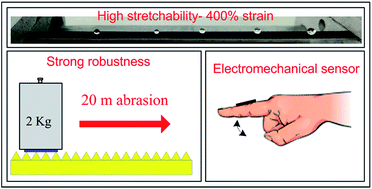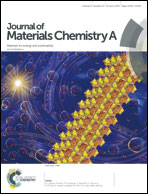A stretchable and super-robust graphene superhydrophobic composite for electromechanical sensor application†
Abstract
Stretchable superhydrophobic materials are of potential interest for next-generation multi-functional haptic technologies particularly suited for wearable device and artificial skin applications. However, the practical applications of stretchable superhydrophobic materials are hindered by some issues, such as low mechanical robustness, harmful chemicals, etc. Here, we partially embedded perfluorosilane-coated graphene into thermoplastic polyurethane (TPU) by a dissolution and resolidification method. Due to the exceptional physical properties of graphene, the resulting nanocomposites could maintain their superhydrophobicity after toleration of strain up to 400%, man-made destruction by hands or sandpapers, pollution by oil, immersion in various corrosive liquids, and heat treatment at 150 °C for 24 h. It should be noted that even under an ultra-large load of 2 kg (32.5 kPa pressure), this graphene composite could withstand the abrasion by sandpaper for 20.00 m without losing superhydrophobicity. More remarkably, the electrical resistance of this graphene superhydrophobic composite is sensitive to material deformation, and can be directly applied to gloves for real-time detection of human motions.



 Please wait while we load your content...
Please wait while we load your content...